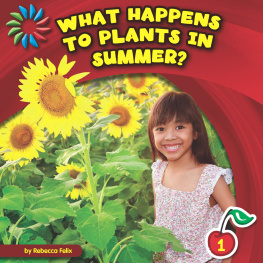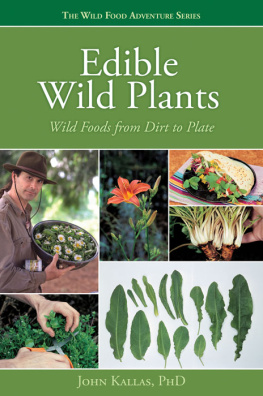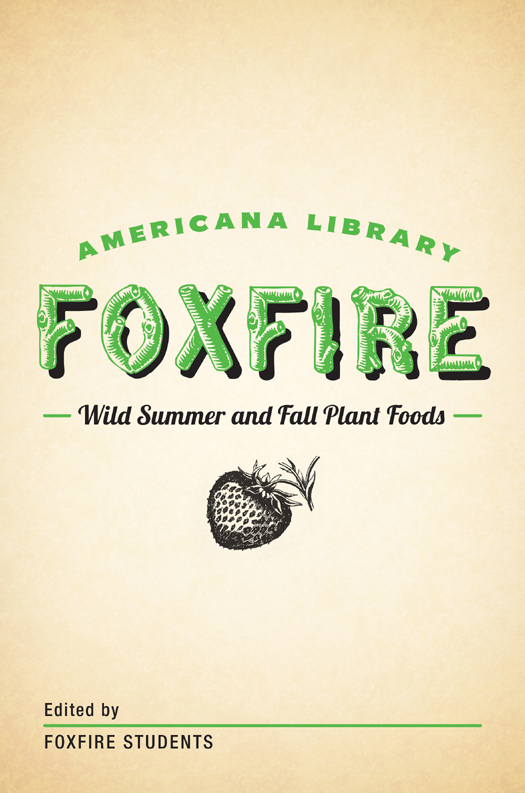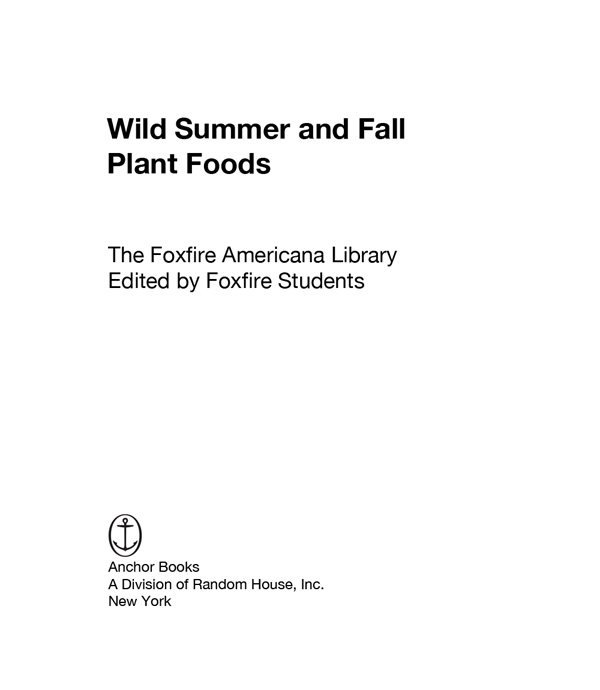ANCHOR BOOKS EDITION, SEPTEMBER 2011
Copyright 1975
All rights reserved. Published in the United States by Anchor Books, a division of Random House, Inc., New York.
Anchor Books and colophon are registered trademarks of Random House, Inc.
This work originally appeared in Foxfire 3, 1975 by The Foxfire Fund, Inc. Reprinted by permission of Random House, Inc.
eISBN: 978-0-307-94827-4
v3.1
Table of Contents
A NOTE ABOUT THE FOXFIRE AMERICANA LIBRARY SERIES
For almost half a century, high school students in the Foxfire program in Rabun County, Georgia, have collected oral histories of their elders from the southern Appalachian region in an attempt to preserve a part of the rapidly vanishing heritage and dialect. The Foxfire Fund, Inc., has brought that philosophy of simple living to millions of readers, starting with the bestselling success of The Foxfire Book in the early 1970s. Their series of fifteen books and counting has taught creative self-sufficiency and has preserved the stories, crafts, and customs of the unique Appalachian culture for future generations.
Traditionally, books in the Foxfire series have included a little something for everyone in each and every volume. For the first time ever, through the creation of The Foxfire Americana Library, this forty-five-year collection of knowledge has been organized by subject. Whether down-home recipes or simple tips for both your household and garden, each book holds a wealth of tried-and-true information, all passed down by unforgettable people with unforgettable voices.
SUMMER AND FALL WILD PLANT FOODS
All the plants mentioned here grow easily in, and are native to, our part of the mountains, and were used traditionally in the ways noted. Any recipes that turned up whose actual use we could not verify with our older contacts were simply left out of the chapter.
Although the recipes call for the use of sugar, honey or sorghum are both acceptable substitutes, except for fancy cakes or light pastries. Some rules of thumb follow: 1) Both honey and sorghum may be used with preserves or canned fruits such as apples, peaches, and pears. The preserves will taste better and sweeter than if sugar is used, and less of each can be added (sweeten to taste). 2) Honey is excellent in breads and other yeast doughs. 3) Sorghum is best used in dark cakes such as apple cake, and will impart a ginger or caramel flavor. It is also good for sweetening apple buttersweeten to taste and then add cinnamon or other desired spices.
Once again, we have been aided by Marie Mellinger, who has checked our information and added the proper botanical names, and by Carol Ruckdeschel, who has provided us with drawings of many of the plants.
CANNING AND PRESERVING
Making jams or jellies became popular after glass jars became available for canning and preserving. Before that, fruits and berries were dried or made into strawberry or peach leather. Drying fruits and berries called for patience and a great deal of sunlight, or an oven large enough to hold trays of fruit.
In the early days of jelly-making, the mountain women did not have Certo or Sure-jel, and used green fruit along with the ripe to make jelly jell or thicken. The tart little wild crabapples were often added to blackberries or blueberries. A fruit acid also was made up for this purpose by dissolving 1 ounces tartaric acid in three cups water. Pour this over three quarts mashed, sour-tasting fruit, and let stand twenty-four hours. Strain the fruit, and add one pound sugar to each pint of juice, stirring constantly until the sugar is dissolved. Bottle the juice, but dont seal the jars tightly for several days. This juice (two tablespoons in each batch) may be added to juices that need more tartness to make jelly. Or make a blackberry acid by adding one gallon blackberries to a quart boiling water. Let the berries stand six hours, then pour off and strain. To each quart juice, add one ounce tartaric acid. To each pint of this juice, add 113 pounds sugar. As soon as the sugar dissolves, bottle the juice and seal the bottles with paraffin. Add these juices to berry juices to make jelly when acid is absent in the berries.
Mrs. Cora Ledbetter gave us these directions her mother and grandmother had used for making jellies.
Fruit for jelly should never be fully ripe; some fruits must be almost green. There are exceptions to this rule, but very few. It is important in jelly-making that the fruit be used in the proper stage of ripeness, as no amount of cooking will make jelly of over-ripe fruit, and if too green, the flavor of the fruit is lost. It is also necessary that good, sound fruit be used to make clear, firm jelly. A porcelain kettle is always best, but a brass kettle (if its kept bright) or a new tin pan will do.
When the fruit is being cut, it should be kept in clear water until ready for use; then it should be taken from the water, placed in the kettle, and covered with fresh water, as the fruit is apt to have colored the first. Keep the kettle covered, and steam the fruit until its perfectly tender, as you wish to get the juice from the fruit without breaking or mashing it more than is necessary. When ready to strain, pour in a jelly bag; hang it up and let it drip; dont squeeze.
It is best to boil the juice a few minutes before adding the sugar. Speed is necessary if the natural flavor of the fruit is to be retained and the jelly is to be bright and clear. The jelly should make in twenty to thirty minutes from the time the sugar is added, and it should be skimmed all the time it is boiling. The best way to tell when it is ready is to drop a little from the spoon into a cup of cold water. If it goes to the bottom and forms a ball, it is ready to be taken from the fire. Another way to test its readiness is to let a small quantity cool on a perfectly dry surface; if ready, it should form a jelly.
After pouring the jelly into the jars or jelly glasses, let them stand in the sun several hours. Then place papers, dipped in brandy, on the jelly and cover, or use paraffin or tins.
Never cover the jelly jars with the tins until the jelly is thoroughly cooled, otherwise the moisture from the warm jelly will cause the tops to rust. The jelly should be kept in a dry place.
To clarify jelly, beat the white of an egg and put it in the juice when the sugar is added; when it boils up as if it would boil over, take it from the fire and pour in a tablespoonful of cold water. After the ebullition ceases, put it on the fire again. Repeat this, then strain through a jelly bag, return to the fire, and let it boil until it jellies.
To can berries, select those that are ripe and firm. Put them in jars filled with cold water; have the rubbers on the jar lids and place the tops on loosely. Place the jars in a can, or any deep vessel, in which a heavy, folded cloth or rack has been placed. Fill the can with water to within an inch of the top of the jars, put it on the stove, and let the water in the can boil three minutes. Tighten the tops of the jars, remove them from the heat, and let cool. When cool, tighten the tops again. A cup of sugar may be added to each half gallon of berries when they are first put in the jars. Care should be taken to have them well sealed before packing them away, and they must be kept in a cool place.
BERRIES AND FRUITS






